India’s Architectural Gems: Stepwells (Baolis)
Known variously as baoris, baolis and vav, stepwells were designed to fill and empty with the changing seasons, allowing access to the water via a series of cascading terraces, no matter how high or low the water level. Reflecting the importance of water in monsoon-dependent India, most stepwells were lavishly ornamented and decked out with niches and pavilions where people could swim, bathe, perform religious rituals, and enjoy the natural cooling effect of a stored body of water.
Chand Bawri in Abhaneri, Rajasthan


An exquisitely carved maze of 3,500 steps, arranged in perfect symmetry, descends with geometrical precision to reach a well. Built by Rajput ruler Raja Chanda during the 8th-9th Century, Chand Bawri in Abhaneri, Rajasthan, is India’s largest and deepest stepwell. Extending down 13 floors, or 100ft (30m), into the ground, it is a captivating example of inverted architecture.
Rani-ki-Vav, Patan, Gujarat
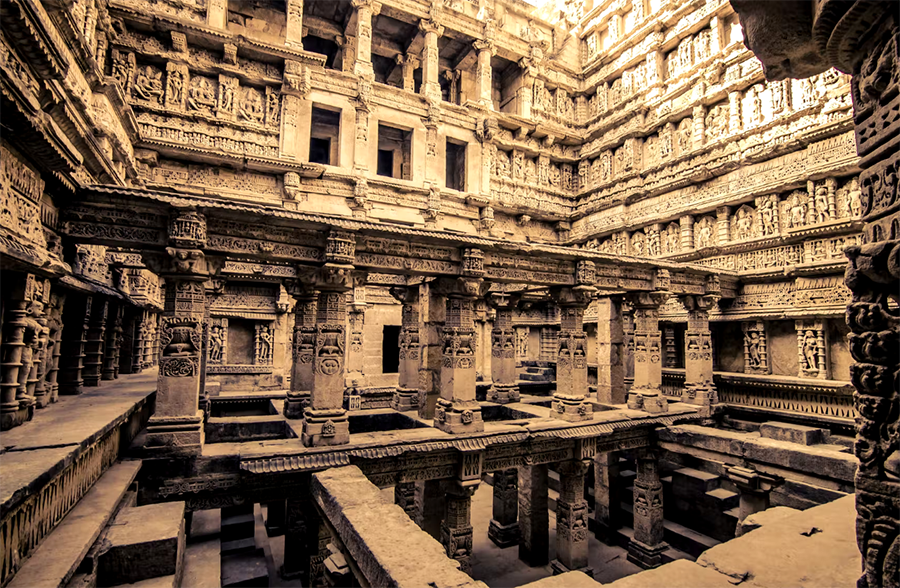
Dropping vertiginously into the ground in a series of carving-covered tiers, this monumental stepwell was constructed on the orders of Udayamati, wife of the Chaulukya king Bhimdev I in the 11th century. The carvings of Vishnu and other deities cover every inch of exposed stone.
Agrasen Ki Baoli, Delhi
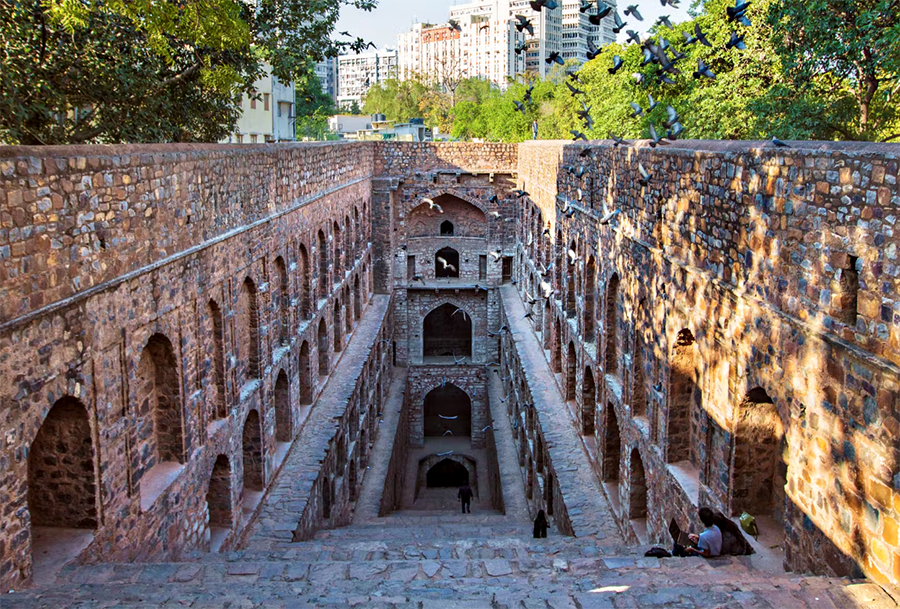
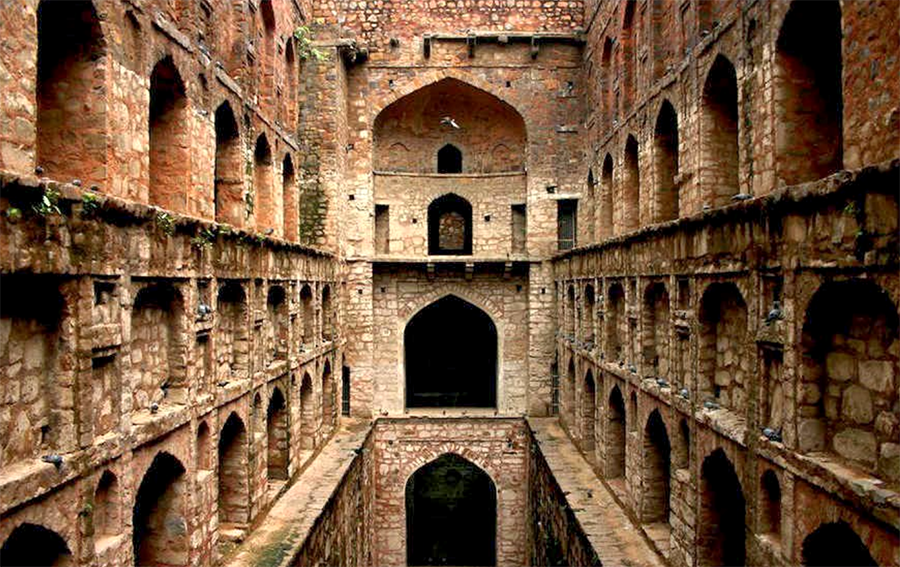
This oft-missed Delhi landmark opens up unexpectedly in the middle of a New Delhi street. The stepwell cuts a 60m-long slice through the earth below the Indian capital, faced with niches set under Islamic arches, accessed via a single sweeping stairway. The structure seen today was most likely constructed during the Tughlaq period in the 14th century, when Delhi was ruled by a dynasty of Turkic sultans.
Adalaj Vav, Adalaj, Gujarat

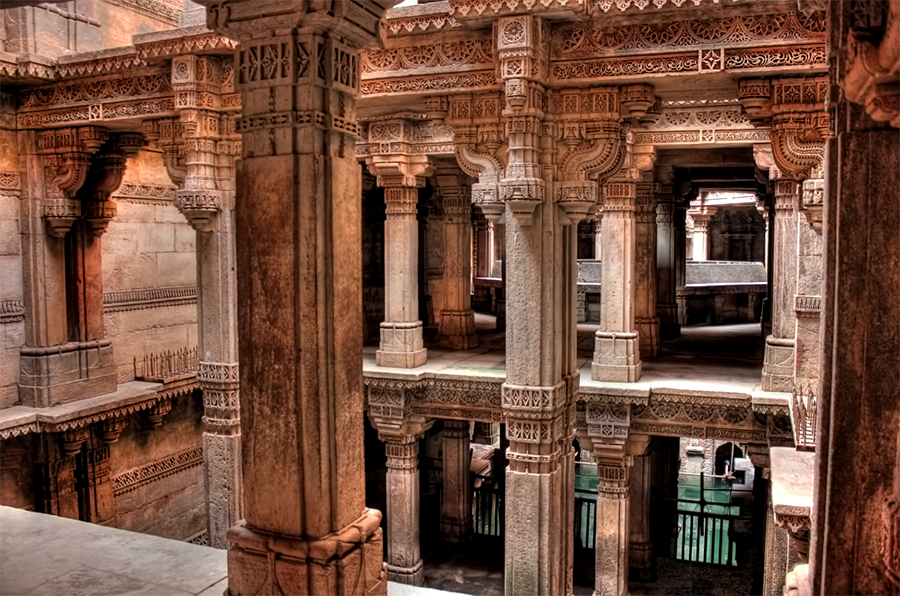
It is a masterpiece of the stonemason’s art – a jewel-box of column-propped arcades surrounding a central, octagonal well shaft, covered in a filigree tracery of carved flowers, elephants, deities and ornamental motifs.
The Pushkarinis of Hampi, Karnataka
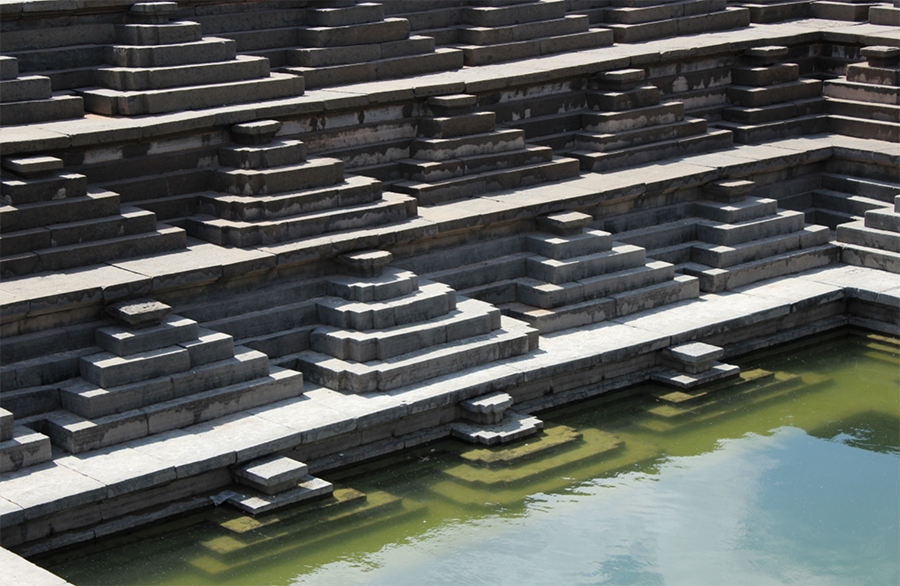
Stepwells are primarily a north Indian tradition, but the Vijayanagar ruins at Hampi are dotted with ceremonial tanks, or pushkarinis, that are built in the stepwell style.
Rajon Ki Baoli, Delhi
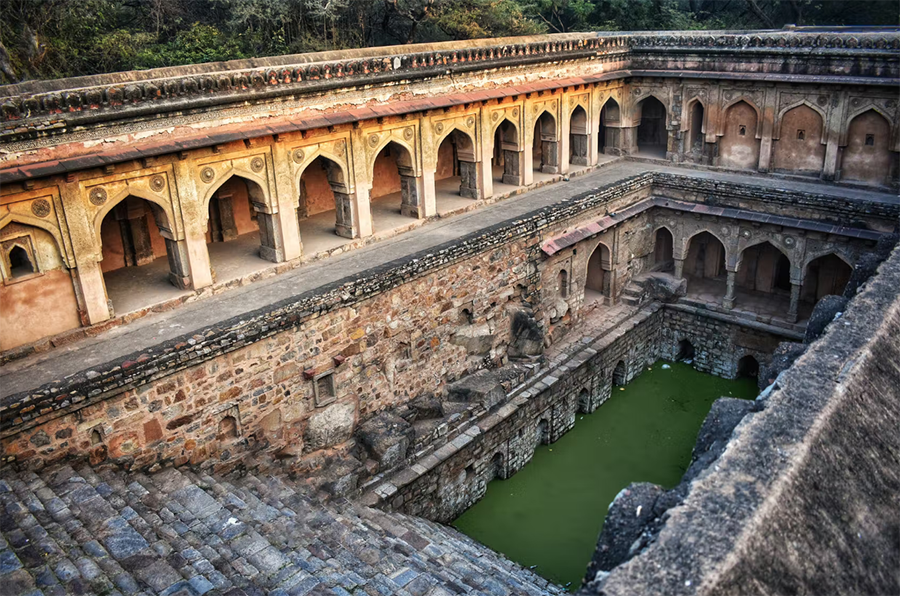
Architecturally, the stepwell is unmistakably Islamic, with stepped tiers of arches decorated with stucco motifs, and niches for lanterns hinting at ceremonial activities after dark. The well was commissioned by Daulat Khan, a prominent official in the government of Delhi’s Lodi Dynasty, in the early years of the 16th century.
Surya Kund Stepwell, Modhera, Gujarat
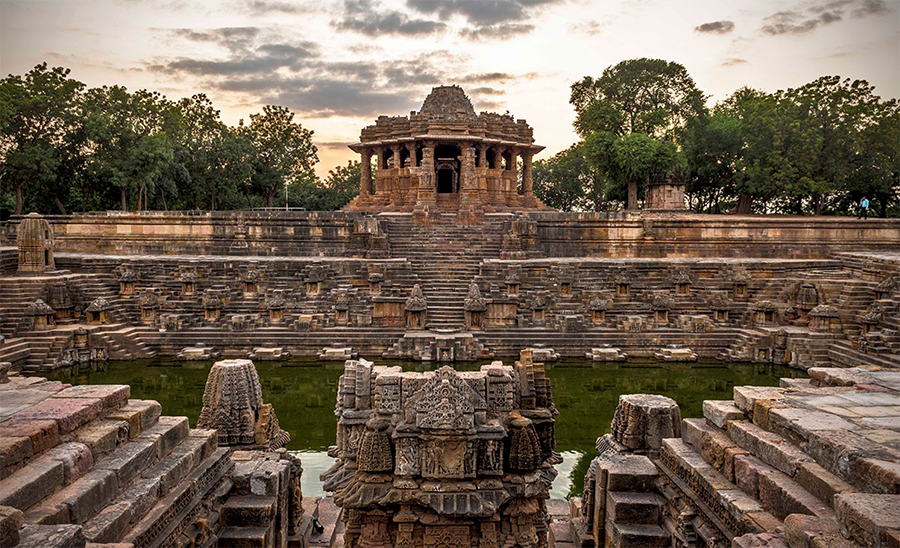
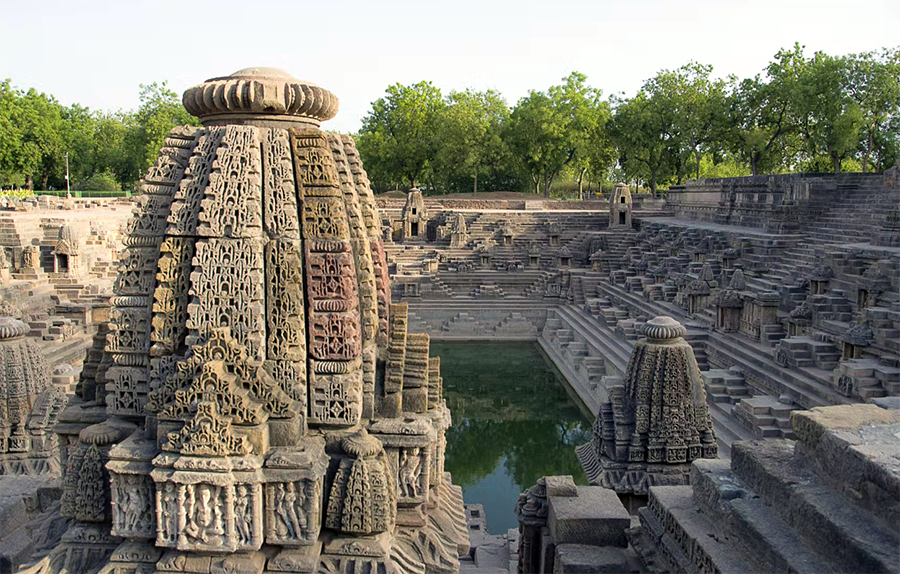
The 11th-century Sun Temple at Modhera was built so that the dawn sun would shine into the inner sanctum during the equinox – a homage to the rulers of the Solanki dynasty, who claimed to be descended from the sun. The temple pavilion backs onto the Surya Kund, a huge stepwell studded with more than 100 small shikharas (spired temples) and shrines, like a sunken art gallery of carved stone. The whole complex was the brainchild of king Bhimdev I, whose wife was responsible for the enormous Rani-ki-Vav at Patan.
via lonelyplanet
